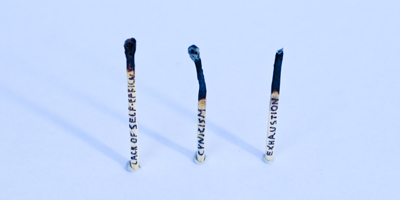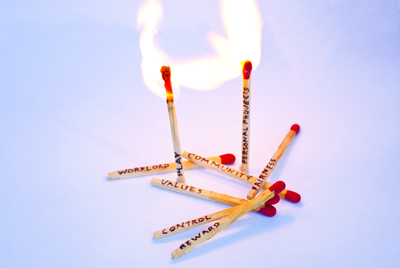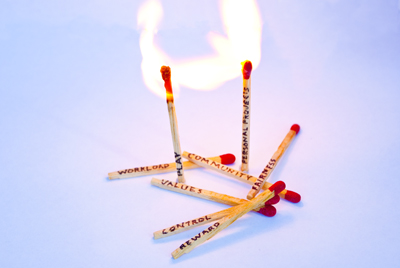Taking a break to take stock: What research tells us about workaholics, burnout and work-life balance
What causes burnout? Is being a workaholic bad? What are the variables to maintaining work-life balance? I find answers in research that points to play and personal projects as possible prescriptions.

Nigel Marsh shared in his Ted talk how he took a year off when he turned 40 to take stock of his life and better understand work-life balance. The outcome, he states, was that “I found it quite easy to balance work and life when I didn’t have any work”. Similar to my experience in 2009, I can attest to this revelation as I dive into research during my current three-week break.
Burnout is bad
Burnout’s common indicators are generally defined as:
- exhaustion (emotional exhaustion);
- cynicism (depersonalization); and
- lack of professional efficacy (reduced accomplishment).
Variables that can both contribute towards and mitigate burnout include:
- workload (the experience of qualitative and/or quantitative work overload);
- control (e.g. role conflict, role ambiguity, autonomy);
- reward (financial, institutional or social);
- community (e.g. social support);
- fairness (extent to which decisions at work are perceived as fair and equitable); and
- values (mismatch in individual and organizational values and goals).
Individual personality also plays a large part. Research shows traits such as emotional stability, positive affectivity, proactive personality, and hardiness all reduced the likelihood and intensity of burnout. Interestingly, while stress is associated with burnout and higher optimism can reduce stress, other research indicates that optimism itself is not enough to mitigate burnout. Simply being positive is not the answer.
Burnout is cumulative, and the impacts from home are negligible. In a three-year study of 2,555 participants, excessive job demands reduced organisational commitment and predicted future depression, while the contribution from home demands had limited effect. In another two-year study of 2235 participants, conflicts between home and work time vying for priority in year one predicted burnout in year two. A mitigating factor was when disengagement from work was used as a coping mechanism, allowing more priority on family time.
Measurement is not an exact science and the assessment varies by culture, but researchers have pegged burnout as affecting 4 to 7 percent of working populations. Research also infers burnout being responsible for a 4 to 8 percent variance in job performance. Another study isolated impacts on cognitive failures, such as decision making and attention spans. These outcomes place the topic in the sights for organisations looking for percentage gains in efficiency and effectiveness.
Is Workaholic such a dirty word?
The term “workaholic” is used as a typical explanation for the burnout condition and one applied to my own person on occasion. But what does it mean to be a workaholic and is that a bad thing in a demanding commercial society?
A workaholic is defined by two factors:
- spending many hours on one’s work, and
- the inability to detach from work.
Interestingly, research finds that only the inability to detach from work is associated with burnout. The hours alone do not mean you are headed down a burnout path if the variables mentioned above are in balance (workload, control, reward, etc.).
People often infer health issues for the workaholic. However, related to the influence of personality on burnout, another study found health issues are less likely if the workaholic is enthusiastic. The study also did not find correlation between health issues and an obsession with work. It appears you can put the time in so long as you find a way to detach.
Solution: Play and personal projects to keep the fires burning

Commercial success demands hard work, while at the same time individuals are inspired to give their all for something greater than themselves. The research above shows that hard work and a focus on the end goal are not bad in themselves. However, if you cannot detach from your work and if the variables in your situation are not appropriate, burnout is likely.
Further research shows us the answer can be found in play and personal projects. A study of business executives found that health and wellbeing improved with those who intentionally play outside of work. The study found the effects improved with those who were particular and inflexible about their play activities, speaking to boundaries and control.
Other research finds that the likelihood of burnout decreases with self efficacy (belief one can do the task at hand) and job involvement. It is not surprising then that engagement with personal work projects is higher for those coming out of a burnout state. Engagement is then sustainable through ownership of these projects and confidence driven by personal success.
I do not want to feel punished for being motivated and driven, but balance is critical. From an organsiational perspective, we need to ensure we get the variables right and build in ownership for both play and personal projects. This needs to be supported by a personal committment to disengage when appropriate and identify those things that refill personal energy. Research shows that if we get this right, we will keep our fires going.


a bit of a sideways angled view at the topic which is refreshing.